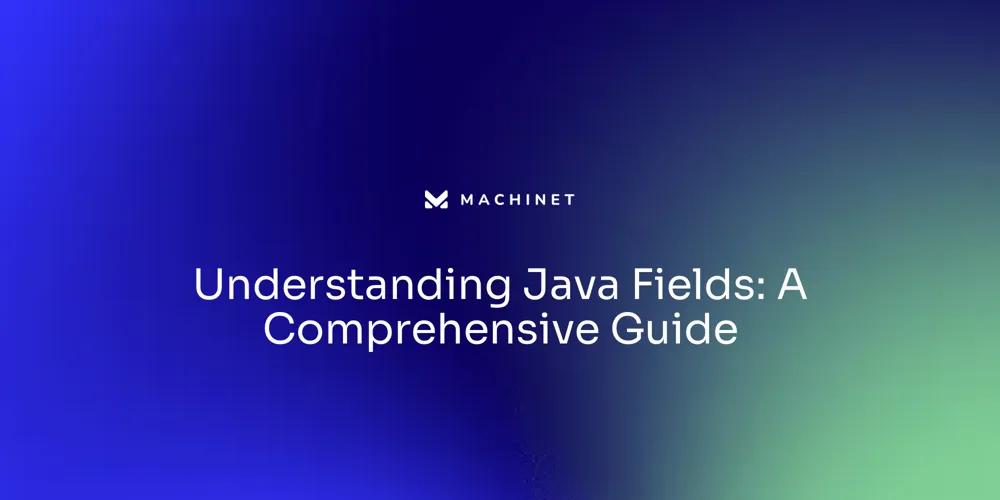
Introduction
In today's rapidly evolving technological landscape, code testing plays a crucial role in software development. It ensures that the code functions as intended, improves code quality, and reduces the risk of bugs and errors. However, developers often face challenges in performing effective and efficient code testing. This is where AI-assisted unit test generation can provide effective solutions.
AI-assisted unit test generation is a powerful tool that leverages artificial intelligence algorithms to automatically generate unit tests based on the code's context. It offers numerous benefits, including increased productivity, improved code quality, and reduced time and effort in writing unit tests. By optimizing code testing with AI-assisted unit test generation, developers can overcome the challenges they face and streamline the testing process.
Understanding AI-Assisted Unit Test Generation
AI plays a crucial role in the process of unit test generation. AI algorithms analyze the code's structure, dependencies, and logic to generate relevant and comprehensive unit tests. This approach eliminates manual test case creation and reduces the chances of missing critical test scenarios.
The benefits of using AI-assisted unit test generation in code testing are significant. It helps developers save time and effort by automating the test generation process. AI algorithms can handle complex codebases, identify edge cases, and generate tests that cover a wide range of scenarios. This improves test coverage and ensures that the code is thoroughly tested.
Best Practices for Optimizing Code Testing

To optimize code testing with AI-assisted unit test generation, it is essential to adopt best practices. These include:
- Start early: Integrate unit test generation into the development process from the beginning. This allows developers to catch bugs early and ensures that code changes are thoroughly tested.
- Write meaningful tests: Focus on creating tests that cover critical functionalities and edge cases. AI-assisted unit test generation can help identify these scenarios and generate appropriate tests.
- Regularly update tests: As the code evolves, update the generated tests to keep them relevant. This ensures that the tests accurately reflect the current codebase and catch any regressions. Regularly updating tests also helps to maintain the reliability and effectiveness of the testing process, ensuring that any changes to the codebase are properly tested and validated.
- Leverage AI-generated suggestions: AI-assisted unit test generation tools often provide suggestions and recommendations for improving test coverage. Utilize these suggestions to enhance the effectiveness of the generated tests. Machinet, an AI plugin, utilizes popular frameworks like JUnit and Mockito to generate comprehensive tests and provides mocks for side-effects. It suggests field values that align with the behavior of the code and follows the Given-When-Then style for better structuring and understanding of the tests. These AI-generated suggestions aim to improve the efficiency and accuracy of test generation for developers.
- Collaborate with developers: Involve developers in the test generation process. Developers can provide valuable insights and domain knowledge that AI algorithms may lack, leading to more accurate and relevant tests. Developers can collaborate in the test generation process by using Machinet's AI Unit Test Agent. This feature allows developers to automatically generate unit tests by selecting the method. The generated tests follow the Given-When-Then style, ensuring better structuring for easy understanding and maintenance. With Machinet, developers can collaborate by reviewing and modifying the generated tests as needed. This feature is available in the Individual Pro and Individual Pro Max subscription plans. Additionally, Machinet Enterprise offers features like Slack and Teams AI chat, which can be helpful for cross-team collaboration and onboarding.
Choosing the Right AI-Assisted Unit Testing Tool
When selecting an AI-assisted unit testing tool, it is important to consider the features and capabilities it offers. Look for tools that can accurately analyze complex codebases, provide relevant test cases, and integrate seamlessly into the existing development workflow. Consider factors such as ease of use, integration with other tools, and compatibility with popular frameworks.
Implementing Code Testing with AI-Assisted Unit Test Generation
Set up the tool: Install and configure the AI-assisted unit testing tool in your development environment. To set up Machinet, you can follow these steps:
- Visit the website https://machinet.net/ which offers an AI assistant for developers.
- Click on the "Get started" or "Sign up" button to create an account.
- Follow the instructions to activate your account. Account activation instructions will be sent to your email address.
- Once your account is activated, sign in to the Machinet platform using your credentials.
- After signing in, you can explore the features and pricing options provided by Machinet.
- To use the AI-assisted unit testing tool, you may need to install a plugin for your preferred integrated development environment (IDE) such as JetBrains.
- Look for the option to download and install the Machinet plugin for your IDE. The website should provide instructions on how to do this.
- Once the plugin is installed, you can start using the AI-assisted unit testing tool within your IDE.
- The tool will utilize popular frameworks like JUnit and Mockito to generate comprehensive tests and provide mocks for side effects.
- You can generate unit tests, re-generate tests as needed, and benefit from the AI's context-awareness to suggest field values aligned with your code's behavi

Follow any additional instructions or tutorials provided by Machinet to make the most of the AI-assisted unit testing tool.
- Define test objectives: Clearly define the objectives and requirements of the tests. This ensures that the generated tests align with the desired outcomes.
- Generate and review tests: Use the AI-assisted unit testing tool to generate tests and review them for accuracy and relevance. Make any necessary adjustments to ensure the tests effectively cover the codebase.
- Integrate with CI/CD pipelines: Incorporate AI-assisted unit test generation into your continuous integration and deployment pipelines. This ensures that tests are automatically generated and executed as part of the development process.
Overcoming Challenges in AI-Assisted Unit Test Generation
While AI-assisted unit test generation offers significant benefits, it is not without its challenges. Some common challenges include the inability to handle certain code structures, the potential for false positives or false negatives in generated tests, and the need for manual review to ensure the accuracy of the generated tests.

To mitigate these challenges, developers can:
- Refine test generation algorithms: Continuously improve the AI algorithms used for test generation to handle complex code structures and reduce false positives or false negatives.
- Combine manual and AI-generated tests: Use a combination of manually written tests and AI-generated tests to ensure comprehensive test coverage.
- Regularly review and refine tests: Regularly review and refine the generated tests to ensure their accuracy and relevance. This helps address any potential issues and maintains the effectiveness of the tests.
- Review and vet generated code: To ensure the accuracy of generated tests, it is recommended to review and vet any code provided by Machinet. While Machinet provides high-quality code and unit tests most of the time, it is still possible for errors to occur. Therefore, it is important to double-check the generated tests and make any necessary modifications.
- Address false positives and false negatives: To mitigate false positives or false negatives in generated tests, developers can review and refine the tests, perform manual testing for validation, analyze test coverage, integrate with CI/CD pipelines for early detection, and provide feedback to the tool or plugin developers for continuous improvement.
Conclusion
Optimizing code testing with AI-assisted unit test generation is a best practice that developers should consider. By leveraging AI algorithms to automatically generate unit tests, developers can save time and effort, improve code quality, and increase test coverage.
It is important to choose the right AI-assisted unit testing tool, follow best practices, and address the challenges associated with AI-assisted unit test generation. With the right approach, developers can overcome the key challenges faced in unit testing code and achieve efficient and effective code testing. Embracing AI-assisted unit test generation opens the door to innovation and success in software development.
AI agent for developers
Boost your productivity with Mate. Easily connect your project, generate code, and debug smarter - all powered by AI.
Do you want to solve problems like this faster? Download Mate for free now.




